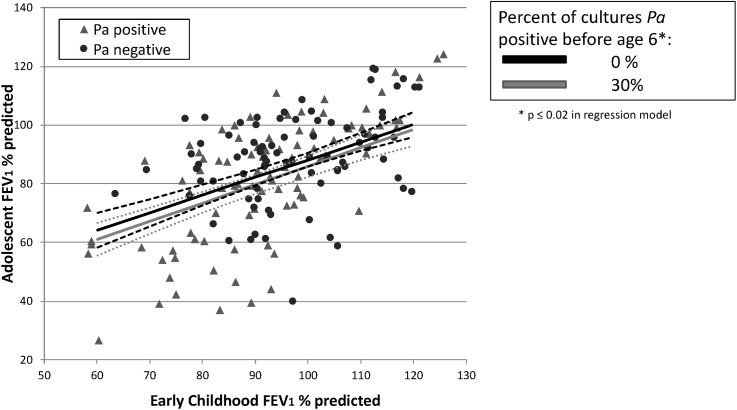Fig 5. NBS linear regression: Predicted adolescent lung function is more strongly associated with early childhood FEV1 than with percentage of cultures positive for Pa in early childhood.
Subject values for mean early childhood and adolescent FEV1 are shown in scatterplot, with subjects Pa positive in early childhood represented by gray triangles, Pa negative by black circles. Superimposed lines represent NBS linear regression results showing predicted adolescent FEV1 (with 95% confidence intervals—dashed lines) by early childhood FEV1. The black line shows predicted adolescent FEV1 by early childhood FEV1 when percentage of cultures positive for Pa prior to age 6 is held at 0% (25th percentile); the grey line represents the predicted adolescent FEV1 when percentage of cultures positive for Pa prior to age 6 is held at 30% (approximately the 90th percentile for our cohort). These values were all adjusted for gender, year of birth, age at diagnosis, number of cultures before age 6, BMI Z score at 2 to 4 years of age, and number of PFT tests included in early childhood and adolescent values (all held at mean). Predicted mean adolescent FEV1 increased by 19.7 percent predicted when early childhood FEV1 was increased from the 25th percentile (85.5% predicted) to the 95th percentile (117.4%), while it decreased by only 4.8% when percentage of cultures positive for Pa was increased from the 25th percentile (0%) to the 92nd percentile (30% positive), or 5.8% when increased to 36.8% positive (95th percentile). Contribution to the explained variance of the full model was 0.1957 for mean early childhood FEV1 vs. 0.0157 for percentage of cultures positive for Pa before age 6.

